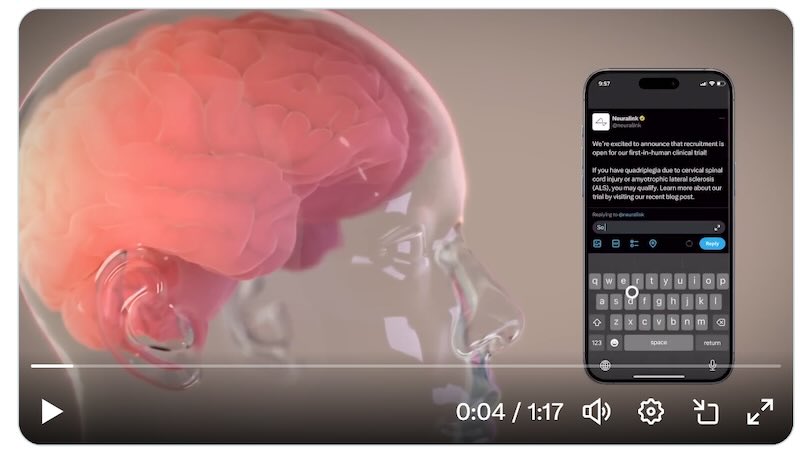Neuralink’s brain implant chip, dubbed Blindsight, has secured Breakthrough Device Designation from the FDA. This milestone marks a significant step forward in the realm of neural technology, potentially offering new hope for those with visual impairments.
Noland Arbaugh, a quadriplegic man, can now web browse, text, and use other digital tools via neural activity alone after receiving Neuralink’s implant. He’s the first person to experience the freedom this technology provides.
Neuralink’s CEO, Elon Musk, hasn’t shied away from making ambitious statements about Blindsight’s capabilities. He asserts that the device could enable sight for individuals who’ve lost both eyes and their optic nerves, and even those blind from birth. However, it’s crucial to approach these claims with a measured perspective.
Blindsight’s potential extends beyond simply restoring lost vision. According to Elon, the technology could eventually surpass natural human sight, offering users the ability to perceive infrared, ultraviolet, or even radar wavelengths. This futuristic concept draws comparisons to fictional characters like Star Trek’s Geordi La Forge.
While the possibilities are exciting, Elon cautions that early iterations of Blindsight will likely produce low-resolution vision, likening it to “Atari graphics.” This tempered expectation sets a realistic baseline for early adopters and medical professionals alike.
Despite the FDA’s Breakthrough Device Designation, Blindsight faces numerous hurdles before becoming a viable medical treatment. Rigorous clinical trials, long-term safety studies, and ethical considerations all stand between Neuralink’s current prototype and widespread implementation.
The FDA’s decision to grant Breakthrough Device Designation indicates that preliminary clinical evidence suggests Blindsight may offer substantial improvements over existing therapies. However, this designation is just the first step in a long regulatory process.
The journey from concept to approved medical device is often long and fraught with challenges. Yet, if successful, Blindsight could revolutionize treatment options for the visually impaired.
Related Post
Neuralink Updated Since Successfully Implanting its Brain Ship into a Second Human Recipient
Neuralink Second Patient It’s 400 Electrodes this Time? Vs 1024 last time
Neuralink Second Brain Chip Implant: A Leap Forward in Neural Interface Technology
